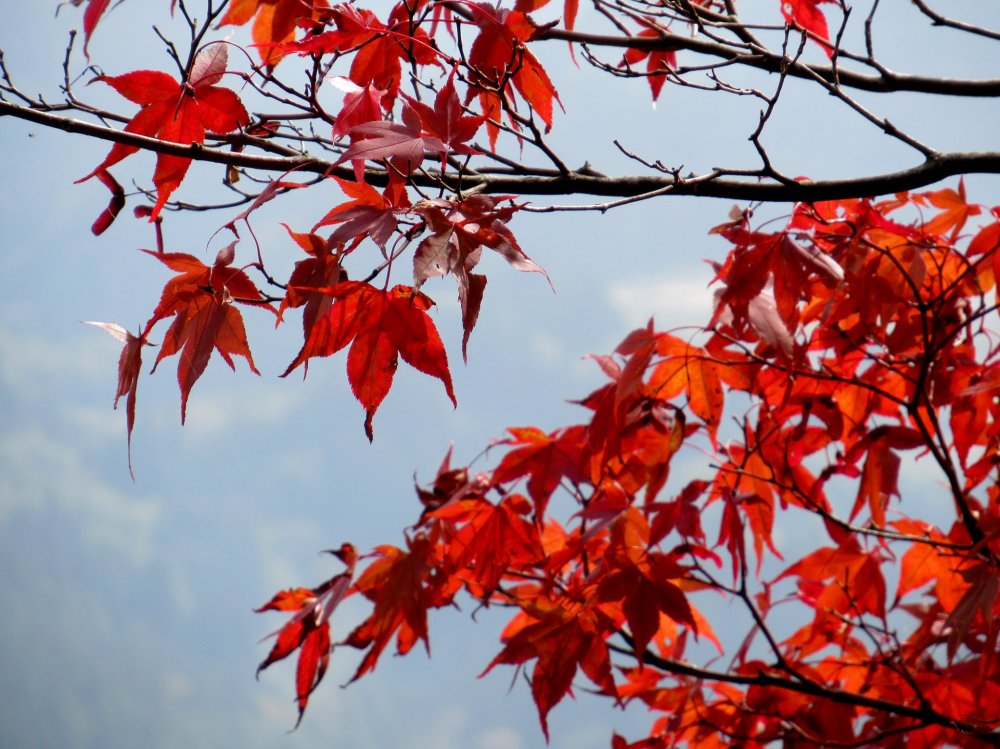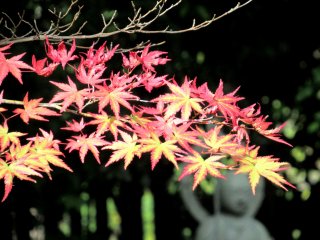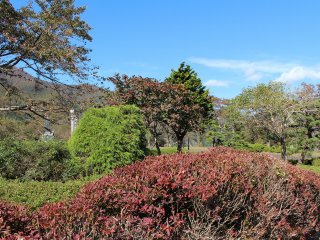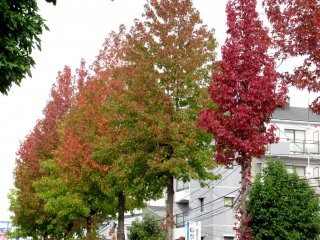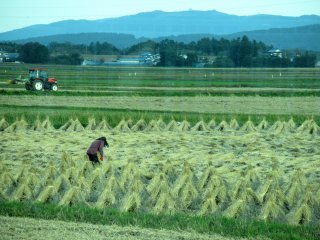Traveling in autumn has the following advantages: it's warm without being hot, nature's colors are changing, creating a special flavor, newly harvested fruits are plentiful, and there are interesting festivals to be had.
Stretching from south to north, the seasons in Japan depend upon the location. In Miyagi Prefecture, north of Tokyo, autumn comes earlier than locations south. In mid-September, it is warm and comfortable in Sendai, Matsushima, Yamadera and Naruko during the day.
At the time many of the trees in Sendai are still green, the wooded mountains start to change colors. In Naruko and Yamadera, the bright red and yellow momiji maple trees start attracting everyone's attention. The tiny leaves, no more than 3-4 cm in size, are very beautiful, especially against the background of a bright blue sky.
The approach of autumn is also felt in the cool transparent air, the views of the harvested rice fields with straw huts, and trees covered with orange persimmon fruits. Various fruits are sold at supermarkets, including apples, peaches, and persimmons.
Autumn is the season of the flowering of the chrysanthemum, Japan's national flower, imprinted in the Imperial symbol of the country. Many places offer chrysanthemum bouquets, exhibitions and festivals dedicated to the flower. It's especially pleasant to see wilds one, for example in Yamadera, where miniature chrysanthemums persistently break through the rocky ground.
Other popular flowers include roses, marigolds, cosmos, water lilies and even a kind of sakura that blooms in spring AND autumn. Another sign of autumn is the silvery grass, the silk panicles which sway silvery in the breeze. Particularly beautiful in the fields, the silver grass is a symbol of Naruko.
As in other seasons, all kinds of festivals are held in the fall. Halloween is popular among children and young people. Most stores in October are decorated in traditional orange, black, purple and green Halloween colors. Popular images are a Jack-o-lanterns, witches, ghosts, skeletons, spiders, and other cute 'horror characters'. Events for children are held throughout the whole month.
In October and November, a more significant Japanese children's holiday called Shichi-Go-San is held. Here, children of three, five and seven years of age are brought to Shinto shrines for special rites. The Shichi-Go-San holiday, literally meaning Seven-Five-Three, originated in the Heian era to celebrate children who survived a critical age and had the chance to reach adulthood. A child under the age of seven was considered to belong to the kami deities and so children who turned seven were assigned the status of 'little man' and 'little woman'. According to tradition, children dressed in beautiful kimonos are brought to temples, where they attend services, receive certificates and are photographed with family members.
A special feature of autumn are the short daylight hours. At five in the evening, the sun sets, and fifteen minutes later it is completely dark. This fact should be taken into consideration when traveling in the countryside or in nature. In the cities, the central streets are brightly lit, but it is dark on the outskirts. Temples and shrines have evening illumination, which gives them a mysterious look.
A visit to a traditional onsen or spa is necessary, at least to get a more complete picture of the culture of Japan. On cool and dark evening it’s a double pleasure!


